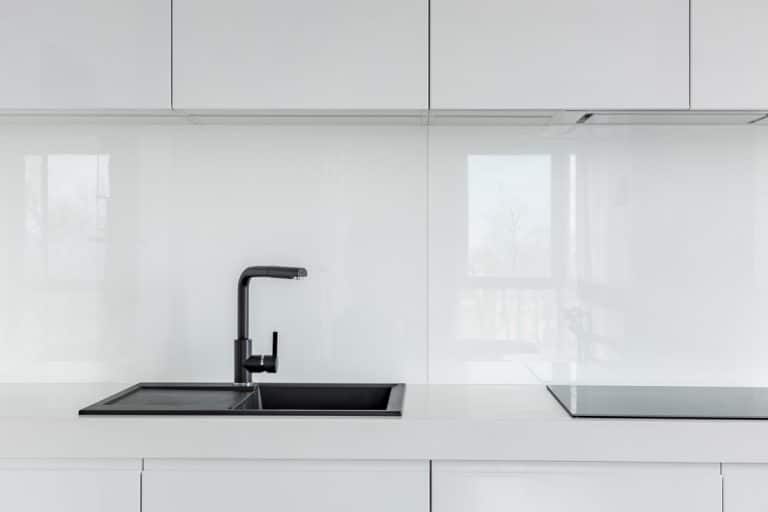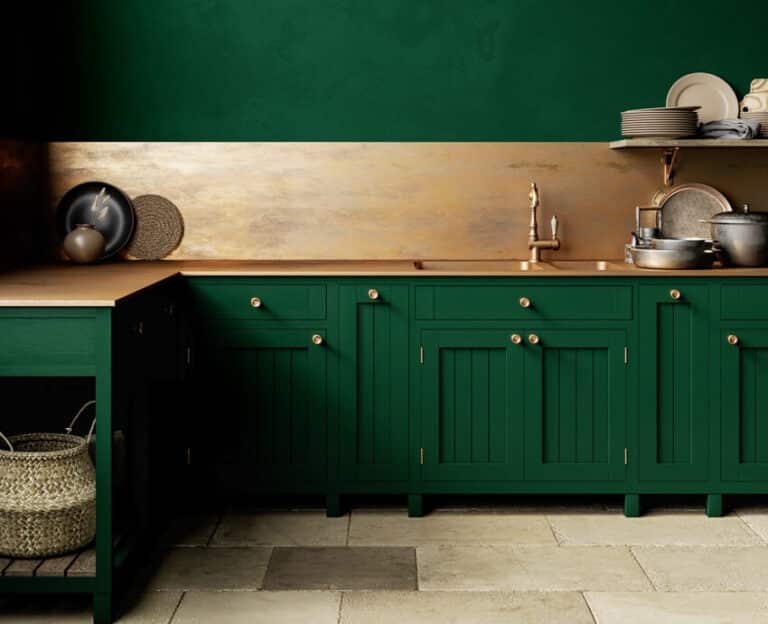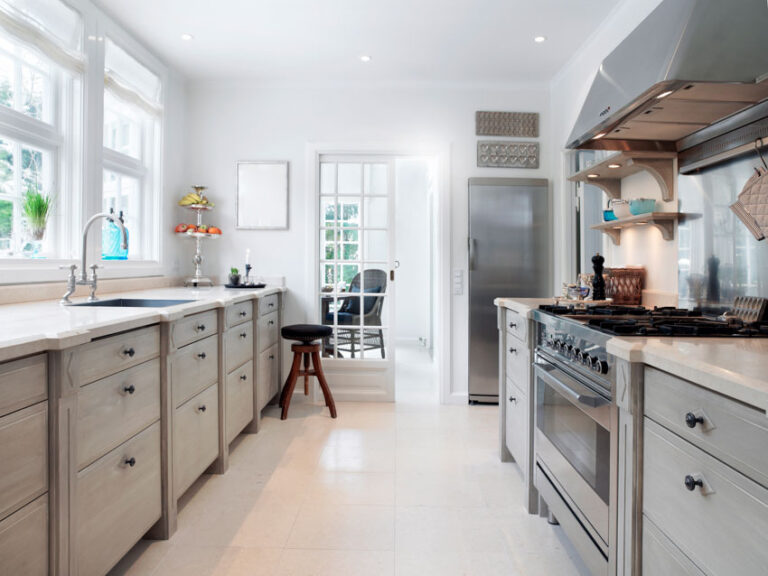Kitchen Without Backsplash Ideas (Pros and Cons)
The kitchen is a space at home that will always feel like a battlefield, especially with all the grease and water splatter that’s normal when cooking. These splatters can serve as a major problem, especially since in the long run they can cause damage to your walls.
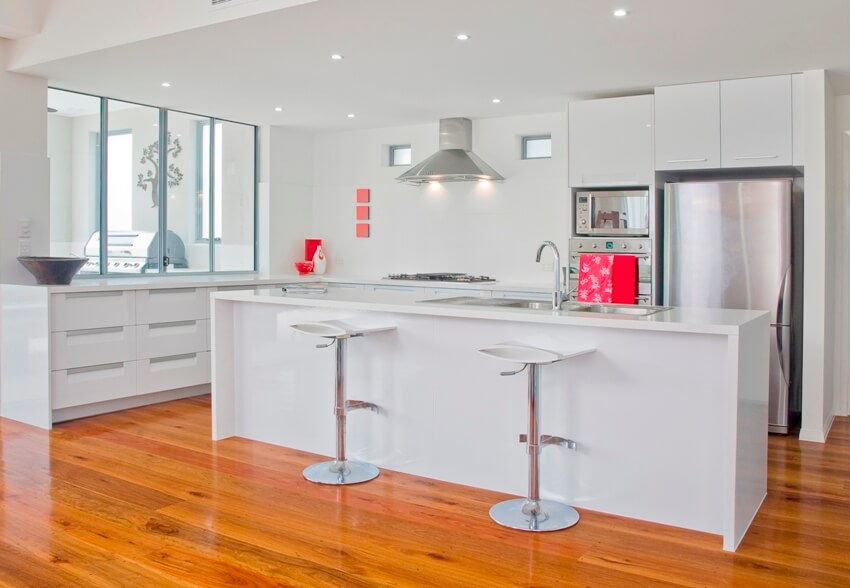
One of the defenses you can do for your kitchen walls against these splatter issues is to install a backsplash, specifically behind the areas most at risk from these issues, which are the walls behind the sink and stove.
Most homes install a backsplash in these areas to avoid the risk of staining and permanent wall damage. This protective surface can be made of wood, concrete, and natural stone. The choice depends on the homeowners and what they believe will be the ideal option. However, the best factors to consider in the decision are durability and difficulty in cleaning and maintaining.
Since a backsplash is a functional element in the kitchen, it is a vital consideration to take into account. While notoriously overlooked, it is an element worth investing in. And more than just being functional, it can also be a stunning aesthetic element. Turning the backsplash into a durable accent wall is an incredible option.
While tile is the traditional backsplash material, you can consider others. If you’re somehow going for something more affordable, wallpaper and paint can help you. But can you not bother with it at all?
Do You Need a Backsplash in the Kitchen?
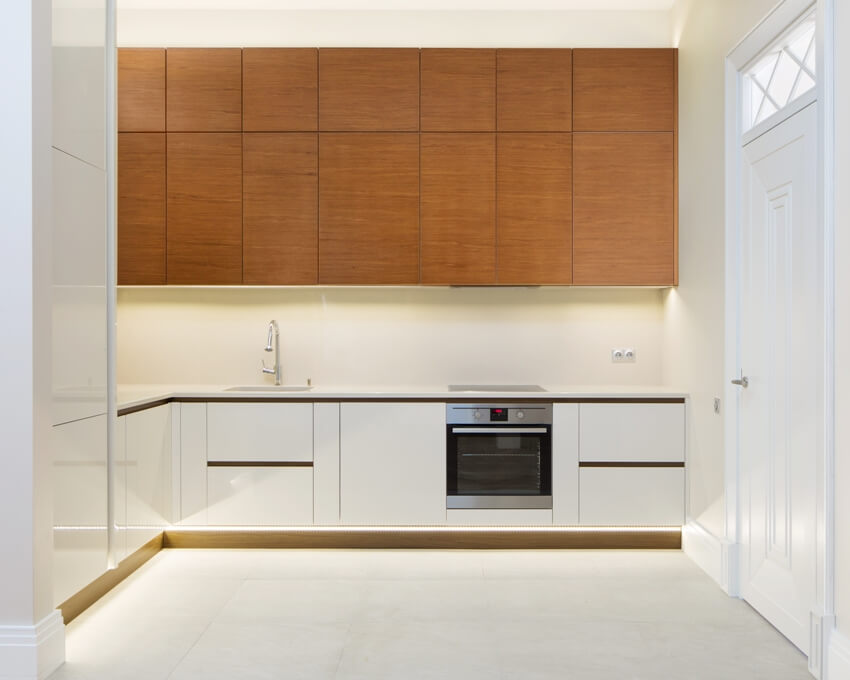
So, can you go ahead without having a backsplash in the kitchen? Of course, you can, but you need to make sure that you are prepared for the consequences that come with this decision. Without a backsplash, you will need to seal the edges of the wall to protect it from water dripping down the backside of the countertop.
You need to brace yourself for possible grease and food splatters on your walls and clean up as often as needed to remove the dirt on the wall that may cause permanent damage.
While not necessarily a major requirement, a backsplash is recommended to be installed in the cook space. But you can always go without the backsplash if that’s what you desire.
There are several factors to consider that will help you decide whether a wall tile accent is necessary.
Protection For Your Walls – If you value your walls and are very particular with their design and style, you must install a backsplash.
Protecting them from permanent damage is the best way to go and is possible with the help of wall tile or paneling. This might be less of an issue if you have painted walls or wallpapered walls that are easily replaceable and repainted.
The Layout of Your Kitchen’s Floor Plan – Is your countertop connected to the wall, or do you have a freestanding countertop that stands on its own?
If it’s the former, you will need a backsplash to protect the wall from splashes while preparing meals on the countertop if it’s the latter, though, going without a splashguard can be done.
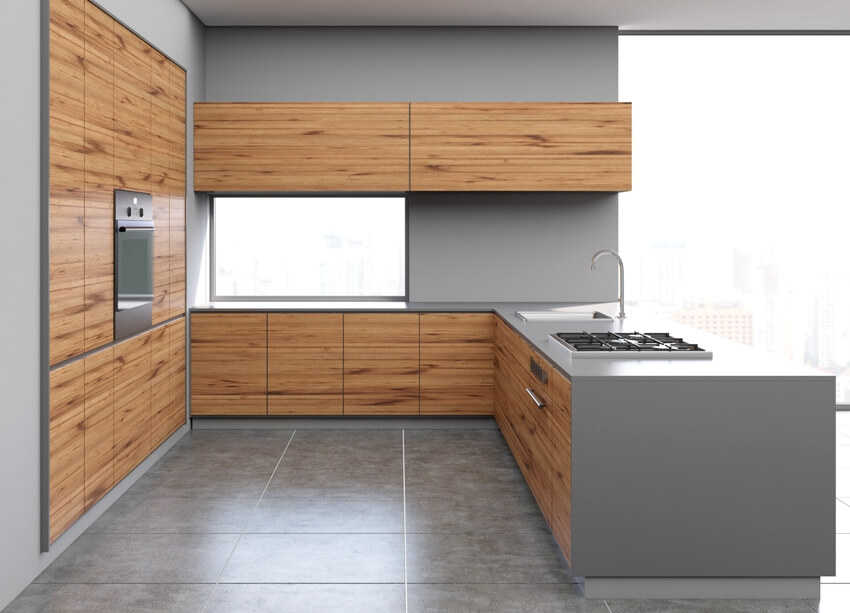
The Location Of Your Stove/Cooktop – There are situations where you won’t need to install a splash guard. One is when you use a stove or cooktop on the kitchen island.
This way, the meal preparation and cooking will happen on the kitchen island, and possible grease and food splatters will be minimized or simply won’t affect your kitchen walls. It is recommended to have one behind the stove to protect the wall directly on the path of cooking splatter.
No Backsplash In Kitchen Pros And Cons
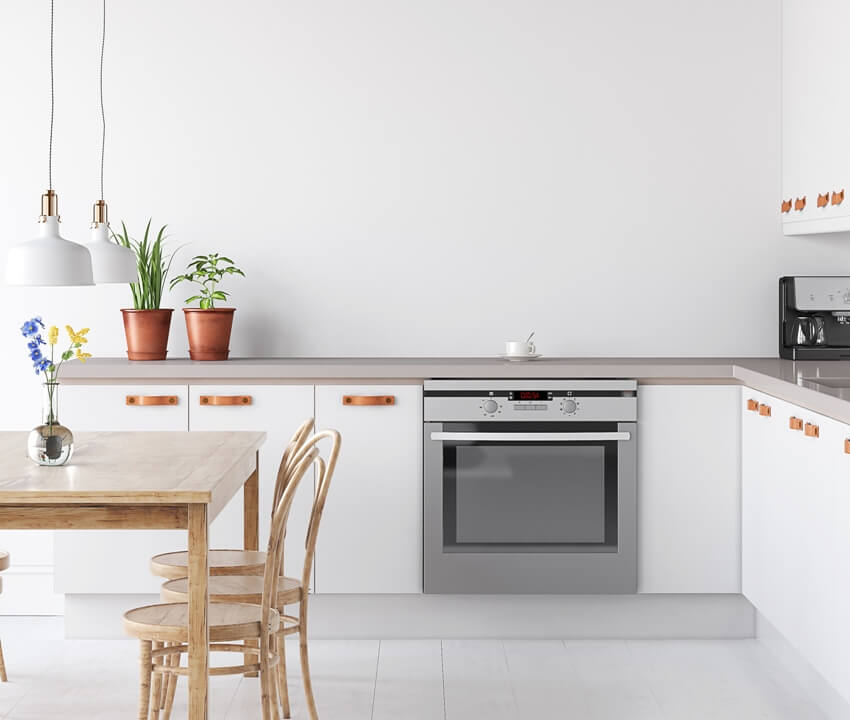
In deciding if having no backsplash in the kitchen is beneficial and ideal for you, weigh its pros and cons and decide on your own.
While a backsplash is highly recommended by designers and builders alike, it may be an element you don’t want to be part of your home. And that’s fine, too as long as you are fully aware of the implications of this decision.
These pros and cons of having no backsplash in the cooking space can help you decide on whether to have one or not in your home.
Pros of Having No Backsplash
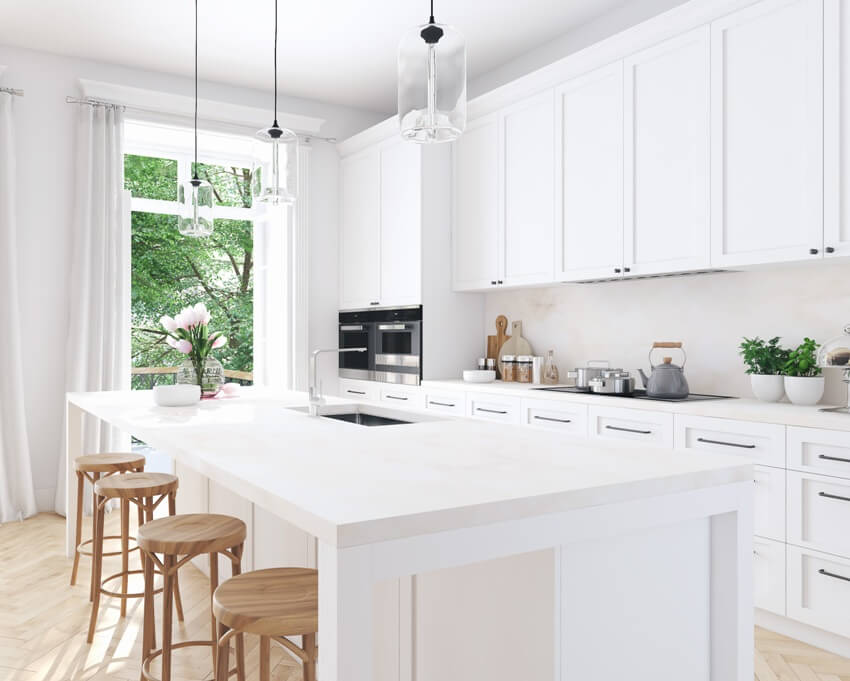
When choosing not to install a backsplash in your kitchen, there will definitely be effects and results. And these are the notable positive consequences of the said decision.
• More free wall space – If you’re planning on maximizing the entirety of the space in the home and do something different about it, like a floating shelf/cabinet or a wall decor can be hung.
• Less elements to clean and maintain – Without a backsplash, you won’t have to worry about its cleaning and maintenance, as well as the possible replacement and renovation needed
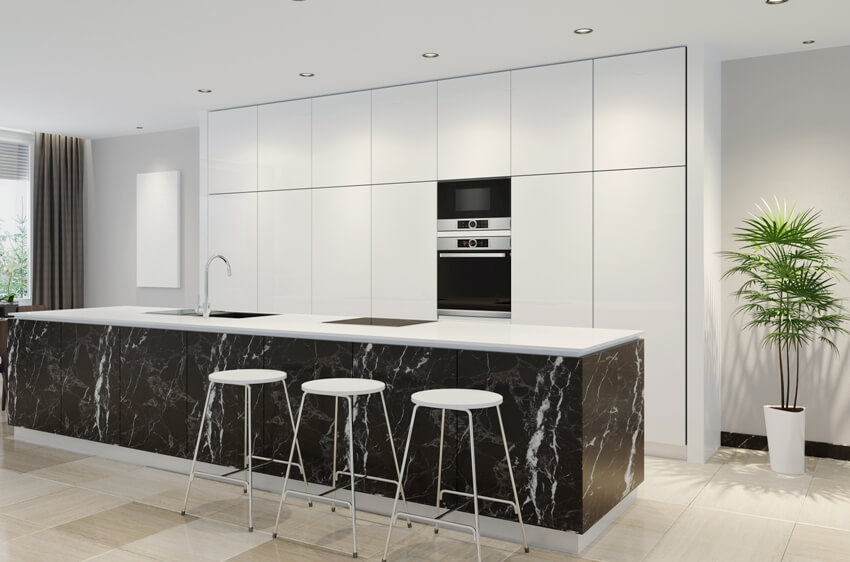
• Not worrying about designing, styling, and matching – When sprucing up your cooking area, you won’t have to worry or consider the style, color, and backsplash design when adding or renovating a specific part of the layout.
• Fewer expenses – If you choose to go without a backsplash, this means you don’t need to pay for the purchase of it and its installation.
• More hassle to renovate – Compared to ordinary walls, a backsplash will be difficult to deal with once you consider removing it to renovate your design, especially since most materials are incredibly durable.
Cons of Having No Backsplash
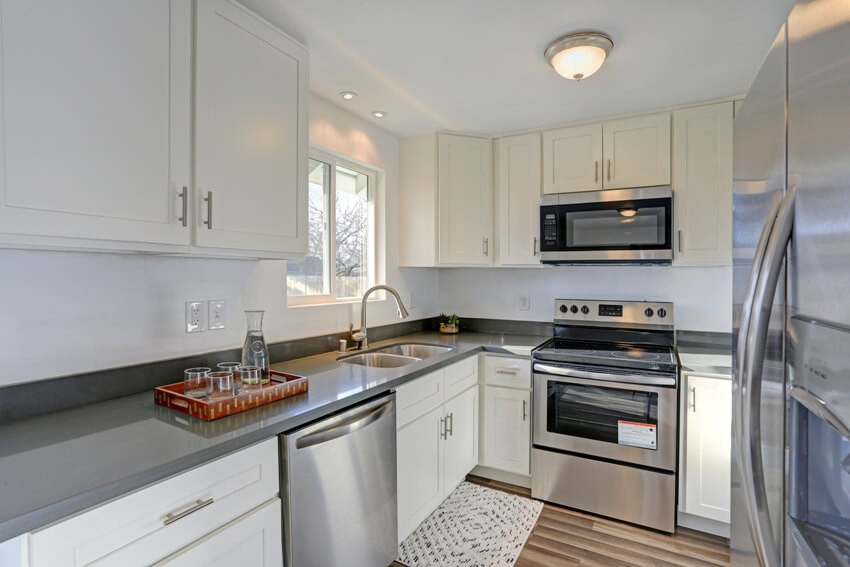
Looking at the other side of the coin, these are the disadvantages of choosing to not have a splash guard in the cooking area. You have to be aware of this matter before deciding on having a backsplash or not.
• Less protection in your kitchen walls – Without a backsplash, you need to be prepared for the possibility of grease and food splatters on your wall and the fact that they can cause ugly staining and permanent damage.
• More often and regular wall cleaning – If you will be foregoing the use of a splash guard, this means that you need to compensate for the consequences that will happen. Since there will be less protection on your walls, grease, and food splatters will be constant, and in order to avoid permanent staining and irreparable damage, you will need to clean the walls more regularly and thoroughly.
• The missed opportunity of additional value in your home – A splash guard can add value to your home if you ever thought of reselling it, so choosing not to install a backsplash in your kitchen means that you’re saying no to the opportunity to raise the value of your home.
• Could have been a good addition to your kitchen’s aesthetics – Just like all other elements in your cooking space and home, a splash guard can add to the area’s aesthetics, whether you plan on matching the colors and design of the splash guard to your flooring or you plan to use it as an accent mosaic wall and stand out.
Whether to install backsplashes is up to you, but consider these pros and cons to avoid regrets. And consider other possible options you can explore besides not having a splash guard.
If you’re creating or thinking about renovating a cooking space layout, you can visualize it using kitchen design software to see how a splash guard would complement your space.
Kitchen Countertops Without Backsplash Alternatives
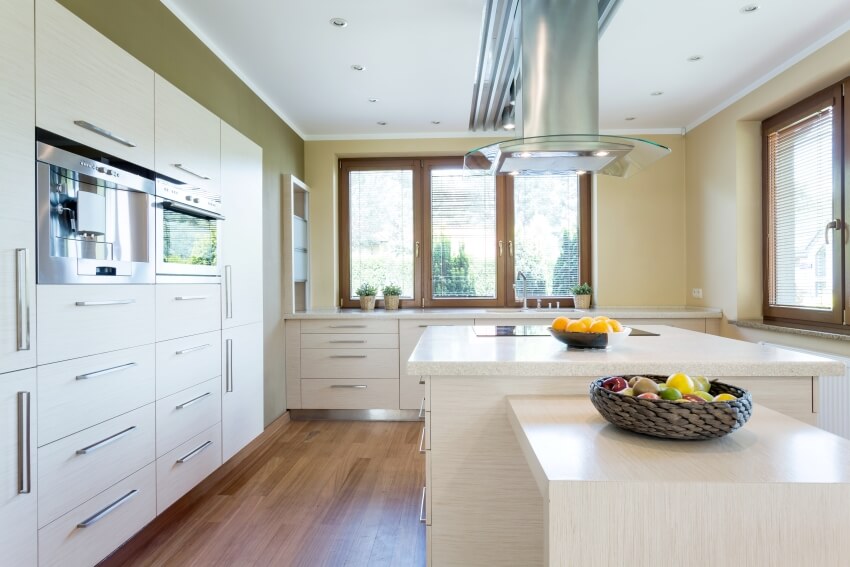
If you’re really set on not installing a splash guard in your culinary area, you will need a corresponding countertop that can support this choice. A countertop is typically connected to the wall, which is why there is a need to install mosaic tiles to protect this wall.
Meal preparation and cooking on the countertop may result in food splashes and grease on the wall. Installing a splashguard can prevent that and protect the fall from permanent damage.
Given that you’re choosing to forgo a wall tile accent, you will need to be creative in choosing kitchen countertops that can support this choice. Here are some countertop ideas to match your no-wall accent decision.
Freestanding Countertop or Kitchen Island
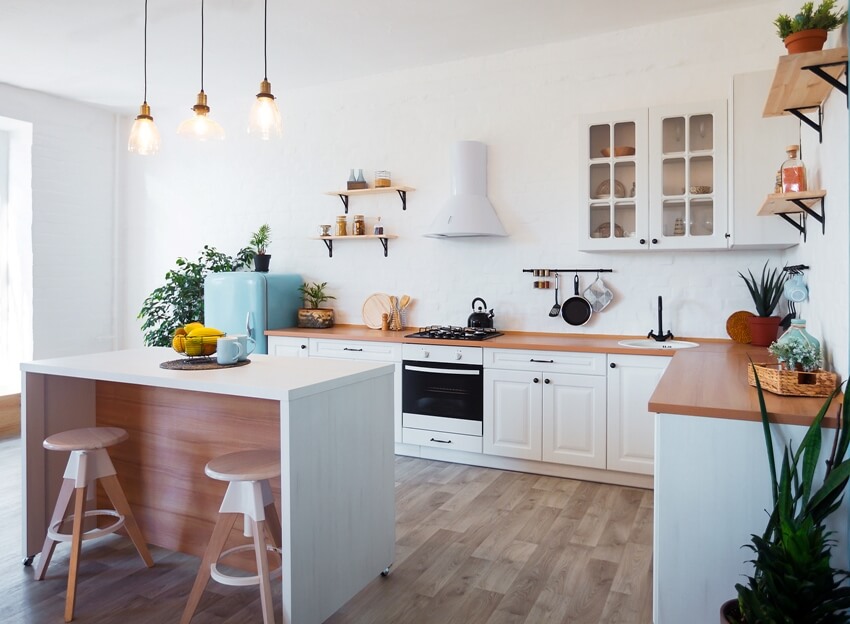
One of the best countertops to match your no-backsplash choice is to go for a kitchen island instead. In choosing a center island or a freestanding countertop, you won’t be connecting the countertop to a wall and so there’s no wall to protect in the first place using a splashguard.
Meal preparation and cooking on this particular countertop won’t result in food splatters and grease on the wall. The downside, though, is that there is a possibility that these splatters will end up on the floor instead, so be prepared to clean the floor just in case.
Large and Spacious Countertop
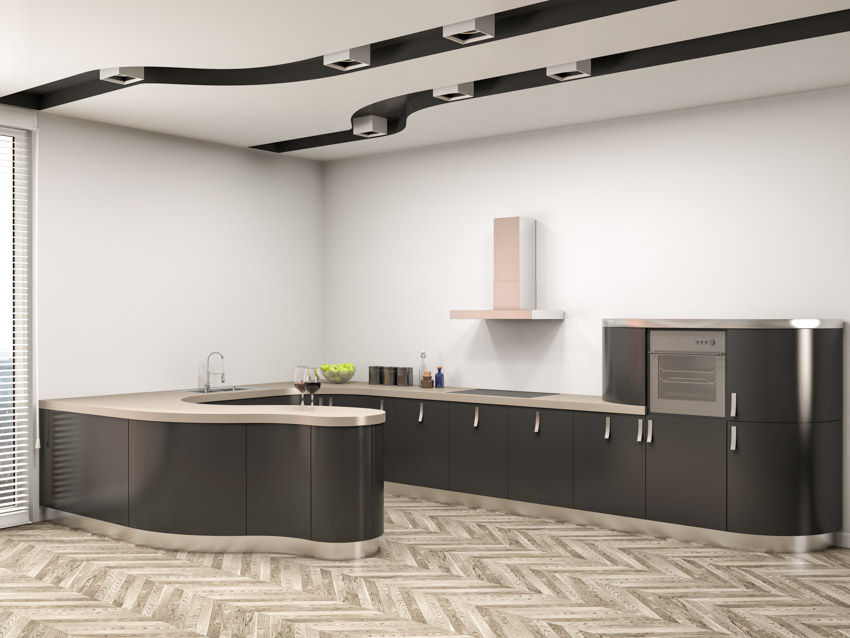
Another option is to choose a bigger and more spacious countertop. Despite being connected to a wall, splatters will be lessened since there is a considerable distance between you and the wall.
The major downside of this option is that you will need to have a spacious cooking area (which won’t be suitable for small kitchens) and that you won’t be able to maximize the space.
If you want to add a splash guard, visit our guide to different types of kitchen backsplash here.



